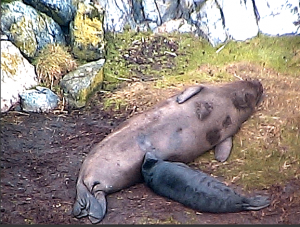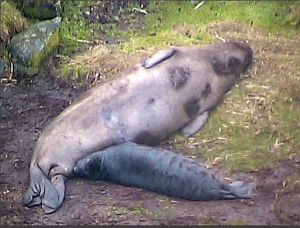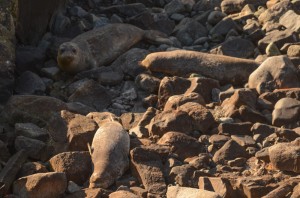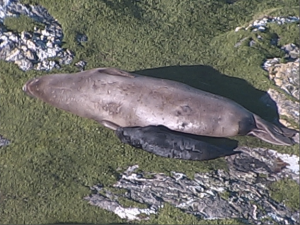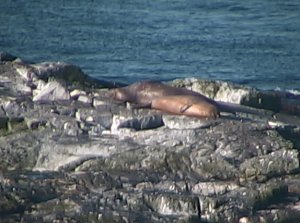Monthly Archives: January 2014
B.C. coast, St. Lawrence estuary most at risk for major marine oil spill: report
The Canadian Press January 29, 2014 01:24 PM OTTAWA — A government-commissioned risk analysis says the coast of southern British Columbia and the Gulf of St. Lawrence are the Canadian areas most vulnerable marine oil spills and among the most likely for a major spill to occur. The findings will add to the debate over several pipeline proposals — including two in B.C. that the report says will substantially increase marine risks. The 256-page study, delivered this month to Transport Canada, looks at the risks associated with marine oil spills south of the 60th parallel under current shipping volumes.

The southern tip of Vancouver Island — including Race Rocks — is among sites considered vulnerable to oil spills. Photograph by: Dan Kukat
It identifies the southern tip of Vancouver Island, the Cabot Strait off Newfoundland, the eastern coast of Cape Breton Island and the Gulf of St. Lawrence as the most probable areas for a major oil spill. But the study also assesses the potential impact of four proposed pipeline projects, including the Northern Gateway Pipeline to Kitimat and Kinder Morgan’s plan to almost triple its Trans Mountain line into Vancouver. The report says the Kinder Morgan proposal would essentially double oil traffic in an already vulnerable marine environment — with a corresponding increase in spill frequency — while the Northern Gateway marine route would turn what are currently very low, near-shore risks into very high risks. The study found that reversing Enbridge’s Line 9 to carry Western Canadian crude to refineries in Montreal and Quebec City would actually lower marine spill risks, as it would reduce oil imports through the sensitive Gulf of St. Lawrence. And the study found that the proposed Energy East Pipeline to St. John, N.B., would likely be a wash, reducing shipping imports but increasing oil exports to leave the overall marine risk about where it is now. © Copyright Times Colonist
- Other posts on this website about the risk of oil spills in the Strait of Juan de Fuca from increased Oil tanker Traffic.
- Posts on the Ecological Reserves website about the risk of Oil Spills
- Posts on the Ecological Reserves website about the Marine Reserves of BC
Also see:
B.C. coast, St. Lawrence Estuary most at Risk for Major Marine Oil Spill: Report
Elephant Seal Pup …putting on weight !
It has been very foggy yesterday so missed seeing the elephant seal pup. I was surprised to see this morning the size he has attained. At 13 days old, gaining 4.5 kg or 10 lbs per day , the pup would have gained 58.5kg or 130 lbs since birth.
At birth pups weigh 75 pounds (35 kg) or more and are about four feet (1.25 m) in length. This figure comes from research done in California. No one has yet done research for recording the growth rates for elephant seal pups at Race Rocks Ecological Reserve.
The pups nurse for about 28 days, generally gaining about 10 lbs (4.5 kg) a day.
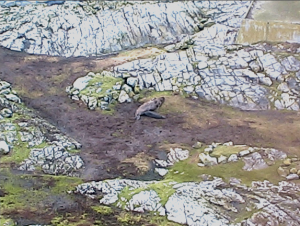
Every morning they are in a different location because the pursues the female the previous night.
I took the following pictures from the Remote Camera 1:
A good source of scientific data on Elephant seal growth rates and survivorship can be found in a 1994 publication : Le Boeuf, Burney J., and Richard M. Laws, editors Elephant Seals: Population Ecology, Behavior, and Physiology. Berkeley: University of California Press, c1994 1994. http://ark.cdlib.org/ark:/13030/ft7b69p131/
Birds Cleaning up Afterbirth of the Elephant Seal.
Nothing goes wasted in an ecological system. A few hours after the birth of the baby elephant seal, Thayer’s Gulls, Ravens and Black Turnstones came by to get a bit of rich protein for the placenta.
Early morning of the Birth of the Elephant Seal
In the early morning just after the birth of the Elephant seal pup, Alex was able to record behaviours of the mother and Pup. Gulls started to go after the placenta, opposed by the mother.
This video was made from clips taken between 0814 hours and 0830 hours.
e-seals, blasting
Sky cleared up yesterday, mostly cloudy today. NE wind less than 15 NMPH becoming W this afternoon.
Counted 16 bald eagles in reserve today, they have started feeding on the deceased sea lion.
Chunk has started spending more time off the main island, he was away all day today and back this evening. I was able to get a better view of Middle Rock yesterday. In the picture below you can see Chunk on the left and a good sized female on the right with a young male behind her.
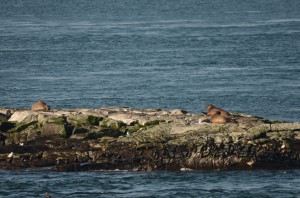
Middle rock: Chunk, younger male and female ( i think the one that had a pup out there earlier this month)
The number of moulting female elephant seals on the main island has increased to a total of 4: 3 in south bay (including one with green tag) and 1 in South East beach (pink tag). They all look pretty rough, as usual.
DND blasting: 1 blast yesterday, 3 blasts today. Looked like some small military vessels doing exercises near the reserve midday today and yesterday.
1 eco tour vessel, 1 charter rental from Pedder Bay (I called the marina as they were in the reserve and it was chartered by Shaw to get footage of race rocks).
-following up on wood stove
-cut, chopped, stacked wood
-topped up fresh water
-did some training/refreshing with relief guardian
-checked on battery water levels
Shooting the Elephant seal Images
Alex uses a Pro-cam video camera at Race Rocks to take video and some still images of the Elephant seals close up. In this sequence, taken on the day after the birth of the elephant seal. He places the camera and then leaves, capturing an interesting sequence as the pup tries to find milk and the Male “Chunk” starts to get aggressive. Click on the small icon in the lower right for a full screen image
An assertive little elephant seal pup video
A short sequence showing the pup is certainly assertive!
Family has relocated on Great Race Rocks
Bertha has certainly been cooperating this year in remaining in view on at least one of the cameras at Race Rocks. On this bright sunny day she is on the rocks over behind the boathouse with the Pup.
Vocalization of Elephant Seal Mother and Pup
Vocalization of mother and pup are essential shortly after the birth of an elephant seal to establish a bond and for recognition of each other if separated in the pupping colony. The first video was taken on the afternoon of January 14, day 1 the pup can be seen looking for food, but she had not started to nurse yet., The second video was taken on the evening of January 14, 2014 the day the elephant seal was born at Race Rocks.
Videos by the Ecoguardian, Alex Fletcher.

